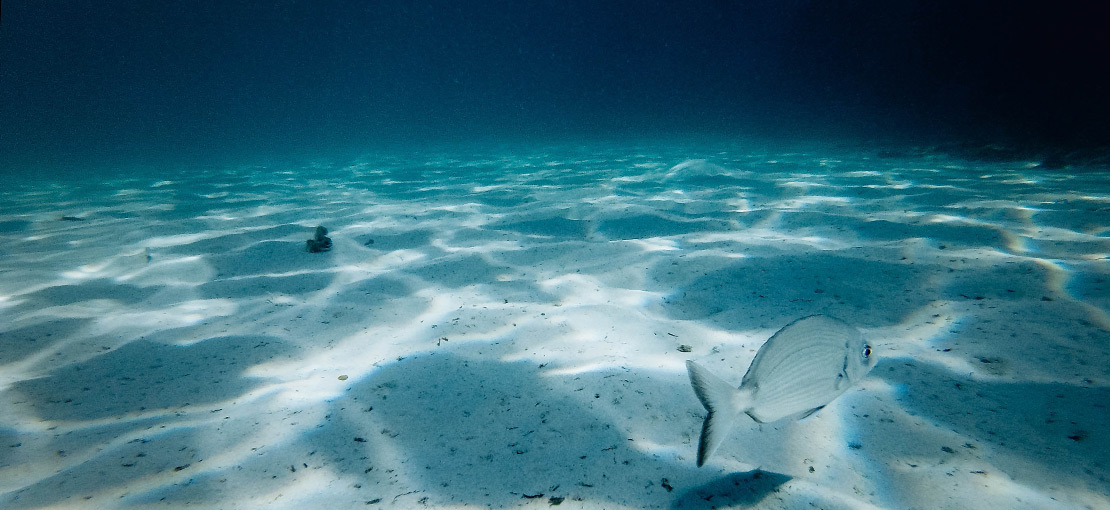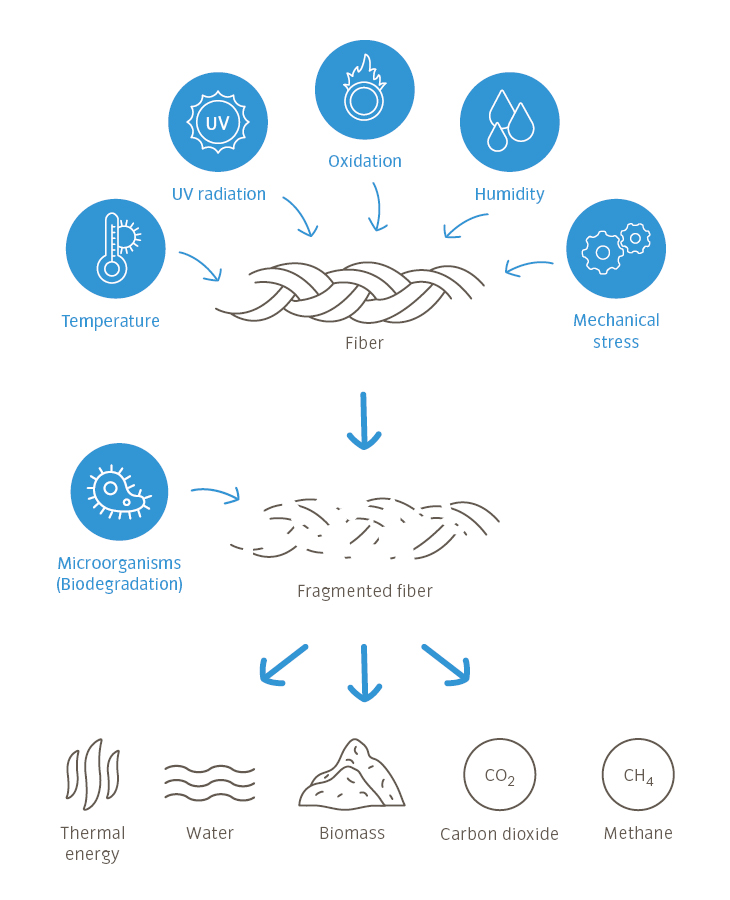
Biodegradable plastics
As a sustainable outdoor manufacturer, we are actively engaged in the question of whether biodegradable plastics are suitable for use in our products from an ecological point of view. In order to answer this question, the ecological added value of the biodegradability of plastics should be proven by tests under real-world conditions.
In addition, the production of plastics – whether from crude oil or renewable resources – requires a great deal of energy. This is the only way to produce high-quality materials with all the functional properties needed. Before we think about the biodegradability of these materials, VAUDE first focuses on their durability and reusability.
Degradable doesn’t necessarily mean biodegradable
Contrary to many reports, biodegradability doesn’t occur through decay, disintegration or the "dissolution" of a material. Influencing factors such as oxygen, UV radiation, temperature and humidity as well as mechanical influences play a major role.
Oxidation, UV Radiation, Heat, Mechanical Influences, Microorganisms (Biodegradation), Moisture, Fragmentation of a Plasic Product (Macroscopic Primary Degradation)
A material is only degraded by biological processes and/or mineralized when the individual components of the plastic are completely metabolized into carbon dioxide, methane, water, biomass and heat.
How fast something decomposes and the products it breaks down into depends on its component materials. A distinction is made between aerobic (oxidative) and anaerobic (reductive) degradation. Aerobic degradation produces carbon dioxide and water as well as energy. During anaerobic degradation, carbon dioxide and methane (but also H2, NH3) as well as energy are produced. Environmental conditions such as humidity and heat also influence the process.
It would be ideal if the plastic waste in our oceans or landfills would simply decompose by itself. This might sound like a promising approach to eliminating plastic waste in the environment, but biodegradation takes place in a wide range of habitats, zones and conditions. Temperature and bacterial activity vary widely between water, soil, home compost piles and industrial compost systems. This means that a variety of testing methods are needed to simulate true-to-life environmental conditions as closely as possible. Only in this way can actual biodegradability be proven.
When you’re using a product, small particles can be shed, (for example, rubber from the sole of your shoes due to abrasion or fibers from fleece products when worn or during the washing process). One of our goals is to design these particles so that they don’t pollute the environment. Biodegradability could be a solution to this problem, which is why we are following the scientific discussion on this aspect with interest. We are also promoting an active exchange on the meaningfulness of the various approaches to solutions in our priority focus on "Plastics in the environment" and within the joint project "TextileMission".
Read what the Federal Environment Agency has written on the subject of biobased and biodegradable plastics here.





